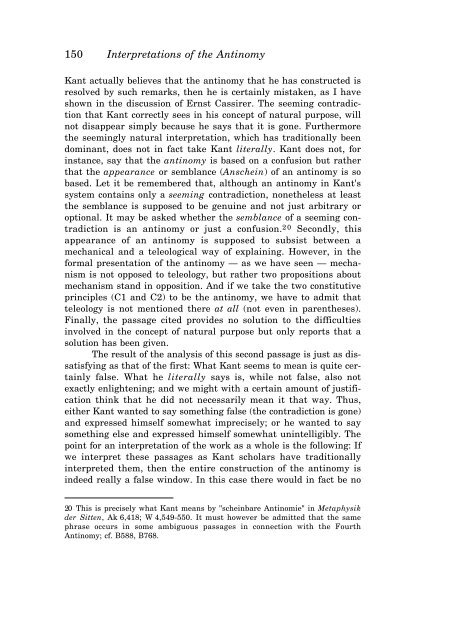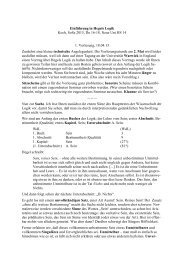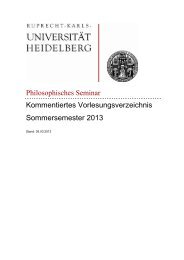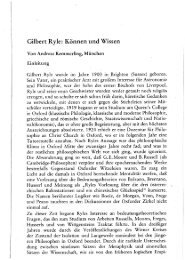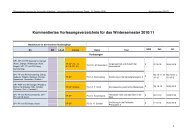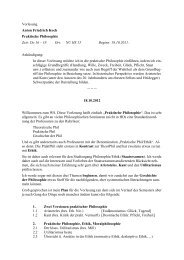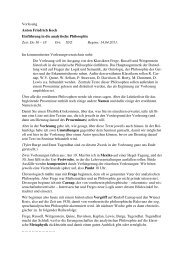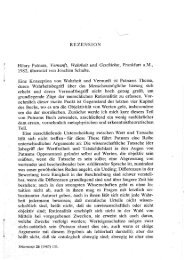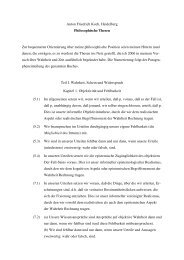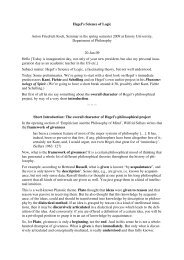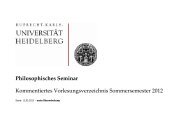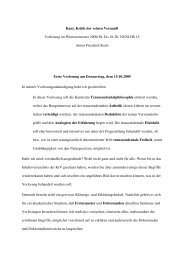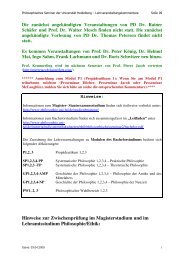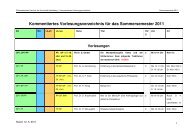KANT'S CRITIQUE OF TELEOLOGY IN BIOLOGICAL EXPLANATION
KANT'S CRITIQUE OF TELEOLOGY IN BIOLOGICAL EXPLANATION
KANT'S CRITIQUE OF TELEOLOGY IN BIOLOGICAL EXPLANATION
You also want an ePaper? Increase the reach of your titles
YUMPU automatically turns print PDFs into web optimized ePapers that Google loves.
150 Interpretations of the Antinomy<br />
Kant actually believes that the antinomy that he has constructed is<br />
resolved by such remarks, then he is certainly mistaken, as I have<br />
shown in the discussion of Ernst Cassirer. The seeming contradiction<br />
that Kant correctly sees in his concept of natural purpose, will<br />
not disappear simply because he says that it is gone. Furthermore<br />
the seemingly natural interpretation, which has traditionally been<br />
dominant, does not in fact take Kant literally. Kant does not, for<br />
instance, say that the antinomy is based on a confusion but rather<br />
that the appearance or semblance (Anschein) of an antinomy is so<br />
based. Let it be remembered that, although an antinomy in Kant's<br />
system contains only a seeming contradiction, nonetheless at least<br />
the semblance is supposed to be genuine and not just arbitrary or<br />
optional. It may be asked whether the semblance of a seeming contradiction<br />
is an antinomy or just a confusion. 2 0 Secondly, this<br />
appearance of an antinomy is supposed to subsist between a<br />
mechanical and a teleological way of explaining. However, in the<br />
formal presentation of the antinomy — as we have seen — mechanism<br />
is not opposed to teleology, but rather two propositions about<br />
mechanism stand in opposition. And if we take the two constitutive<br />
principles (C1 and C2) to be the antinomy, we have to admit that<br />
teleology is not mentioned there at all (not even in parentheses).<br />
Finally, the passage cited provides no solution to the difficulties<br />
involved in the concept of natural purpose but only reports that a<br />
solution has been given.<br />
The result of the analysis of this second passage is just as dissatisfying<br />
as that of the first: What Kant seems to mean is quite certainly<br />
false. What he literally says is, while not false, also not<br />
exactly enlightening; and we might with a certain amount of justification<br />
think that he did not necessarily mean it that way. Thus,<br />
either Kant wanted to say something false (the contradiction is gone)<br />
and expressed himself somewhat imprecisely; or he wanted to say<br />
something else and expressed himself somewhat unintelligibly. The<br />
point for an interpretation of the work as a whole is the following: If<br />
we interpret these passages as Kant scholars have traditionally<br />
interpreted them, then the entire construction of the antinomy is<br />
indeed really a false window. In this case there would in fact be no<br />
20 This is precisely what Kant means by "scheinbare Antinomie" in Metaphysik<br />
der Sitten, Ak 6,418; W 4,549-550. It must however be admitted that the same<br />
phrase occurs in some ambiguous passages in connection with the Fourth<br />
Antinomy; cf. B588, B768.


